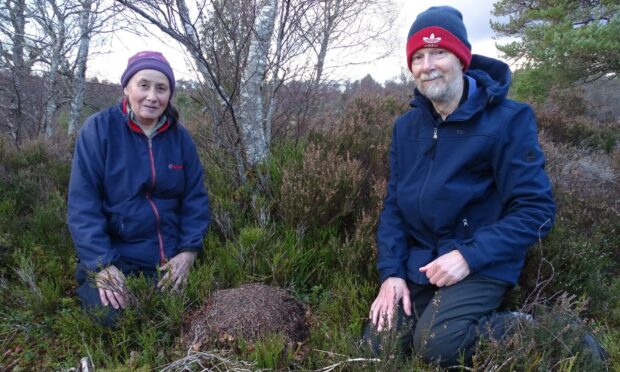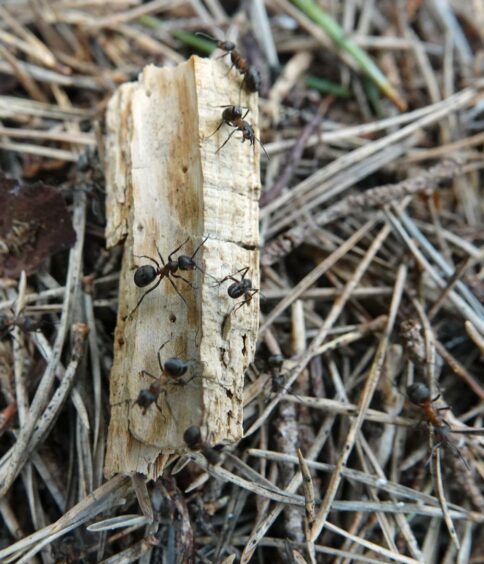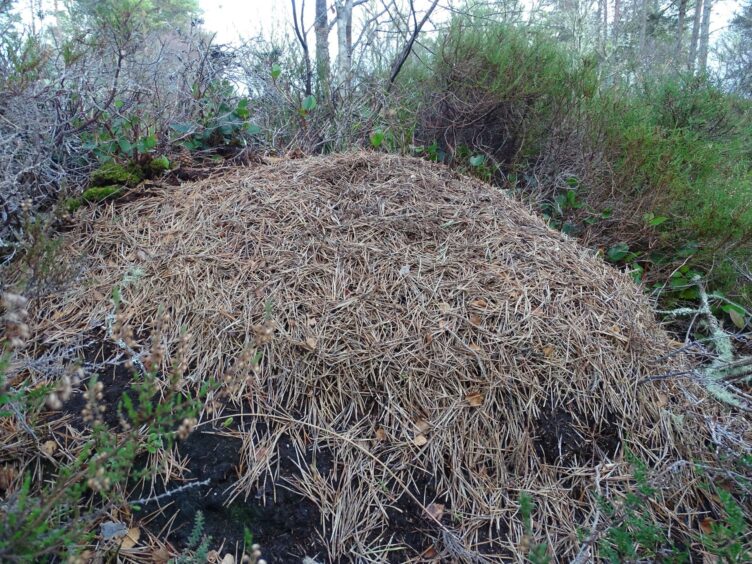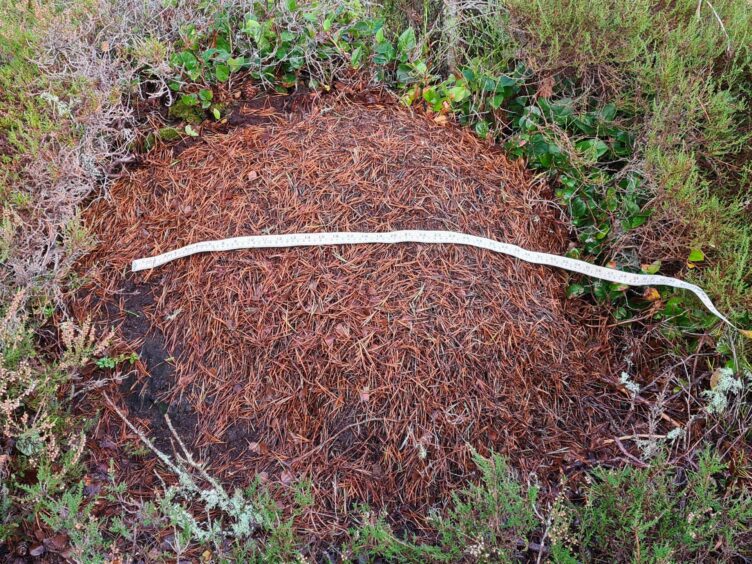A group of volunteers nicknamed “The Anthill Mob” have rushed to the rescue of climate-hero ants under threat from an invasive non-native plant.
Hairy wood ants boost the carbon absorption of woodland, but risk being overwhelmed by Gaultheria shallon, a garden plant that has gone wild to become a serious pest in Scottish woodlands.
Over the winter, volunteers Chris and Meg Mellish surveyed the nests of hairy wood ants at Woodland Trust Scotland’s Ledmore and Migdale woods in Sutherland.
More than 50 anthills were found, but the survey also revealed an immediate threat to the insects.
Site manager Ross Watson said: “Some of these newly discovered nests were surrounded by an invasive garden plant, Gaultheria shallon that is also threatening parts of the oakwood.
“The ants prefer sunny open glades that are south facing and so does the plant. If left unchecked, it forms dense thickets that exclude native vegetation. It would overwhelm our ant nests too if we let it.”
“This is a great example of how biodiverse ancient woodlands can capture and store more carbon. It is not just about the trees but about the soil and the various forms of life they support.”
Vital role of volunteers
He added: “This is also a great example of the vital role our volunteers play in managing these sites. Without the time and care from Chris, Meg and the others these nests may well have been lost.”
Mr and Mrs Mellish were joined by more helpers to become a Gaultheria clearance squad known as The Anthill Mob.
This spring they have been manually removing the plant from around the anthills. Woodland Trust Scotland hopes to eradicate the plant eventually, but it will likely need repeated attacks to finally clear it.
The common garden plant spreads to the wild when birds eat its berries, passing the seeds out in their droppings.
Once one plant is established it spreads via underground stems.
What is the hairy wood ant?
The hairy wood ant (Formica lugubris) collects large quantities of honeydew from sap sucking aphids in trees.
This honeydew is a major source of carbohydrate for the adult workers and represents a significant input of carbon into soils in forests where they live.
A close relative of the hairy wood ant has been shown to account for up to 39kg of carbon per hectare per year.
Aside from their carbon capturing role, wood ants are a keystone species affecting many other organisms.
They remove insect pest species from trees and provide food for other animals including capercaillie and badgers.
Wood ants eat a variety of other insects including caterpillars and beetles, but the bulk of their diet is made up of honeydew they “milk” from aphids. In return the ants protect the aphids from predators.
Wood ants are commonly seen moving up the trunks of pine trees to collect honeydew from pine aphids living high in the canopy.
Ledmore and Migdale is the most northerly Woodland Trust site in the UK.
It was once part of Andrew Carnegie’s Skibo Estate and lies around the small village of Spinningdale, on the shore of the Dornoch Firth.



